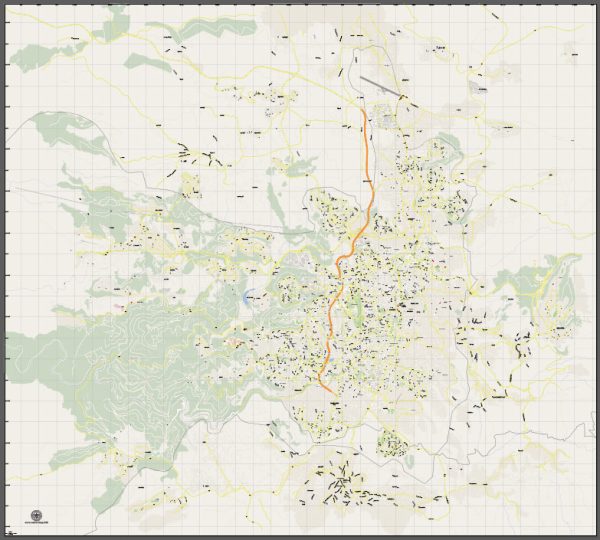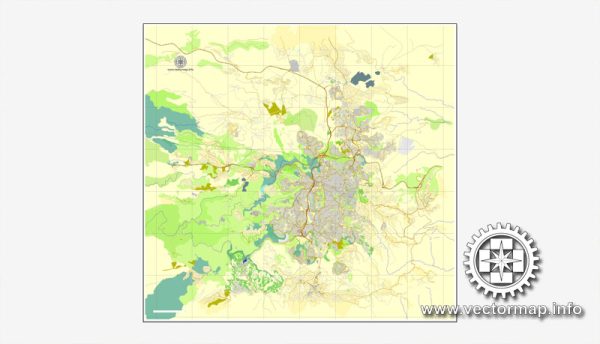Jerusalem, one of the oldest cities in the world, has a rich and diverse history of urban development that spans thousands of years. The city holds great significance for three major world religions – Judaism, Christianity, and Islam – and its history is deeply intertwined with the cultural, religious, and political tapestry of the Middle East.
- Ancient Jerusalem:
- Bronze Age: The earliest known settlements in the Jerusalem area date back to the 4th millennium BCE. During the Bronze Age, it was a Canaanite city known as Jebus.
- King David and King Solomon: According to biblical accounts, King David conquered Jerusalem around 1000 BCE and established it as the capital of the united Kingdom of Israel. His son, King Solomon, built the First Temple on Mount Moriah.
- Assyrian and Babylonian Periods: Jerusalem faced invasions by the Assyrians and Babylonians, leading to the destruction of the First Temple and the Babylonian exile.
- Second Temple Period:
- Persian and Hellenistic Rule: After the Babylonian exile, the Persians allowed the Jews to return and rebuild the Second Temple. Subsequent Hellenistic influences shaped the city.
- Maccabean Revolt: The Maccabees revolted against the Seleucid Empire, leading to Jewish autonomy in Jerusalem.
- Roman and Byzantine Periods:
- Roman Rule: The Romans under Pompey conquered Jerusalem in 63 BCE. Herod the Great renovated the Second Temple, creating the impressive structure known as Herod’s Temple.
- Destruction of the Second Temple: In 70 CE, the Romans destroyed the Second Temple during the First Jewish-Roman War.
- Byzantine Rule:
- Christianization: Jerusalem became a center of Christianity. Emperor Constantine the Great’s mother, Helena, identified religious sites, and the Church of the Holy Sepulchre was built.
- Persian and Arab Invasions: The city faced challenges from the Persian Empire and later the Arab Caliphates.
- Islamic Period:
- Umayyad and Abbasid Caliphates: Jerusalem flourished culturally and economically. The Dome of the Rock and Al-Aqsa Mosque were constructed during this time.
- Crusader Period: The Crusaders captured Jerusalem in 1099, leading to the establishment of the Latin Kingdom of Jerusalem.
- Mamluk and Ottoman Periods:
- Mamluk Rule: After defeating the Crusaders, the Mamluks ruled Jerusalem until the Ottoman conquest in 1517.
- Ottoman Rule: The Ottoman Empire controlled Jerusalem for centuries. Suleiman the Magnificent’s walls around the Old City are notable.
- British Mandate and Modern Era:
- British Rule: After World War I, the League of Nations granted Britain the mandate to govern Palestine. Tensions between Jews and Arabs escalated.
- State of Israel: In 1948, the State of Israel was established, leading to conflicts with neighboring Arab states.
- Jerusalem Divided: During the 1948 Arab-Israeli War, Jerusalem was divided between Israel and Jordan. The Old City came under Jordanian control.
- Reunification and Contemporary Times:
- Six-Day War (1967): Israel captured East Jerusalem, including the Old City, during the Six-Day War, reuniting the city.
- Modern Development: Jerusalem has since seen urban development, including the expansion of Jewish and Arab neighborhoods. The city remains a focal point of political and religious tensions.
Throughout its history, Jerusalem has witnessed numerous conquests, reconstructions, and transformations, making it a unique and deeply significant city in the context of world history and culture.



 Author: Kirill Shrayber, Ph.D.
Author: Kirill Shrayber, Ph.D.